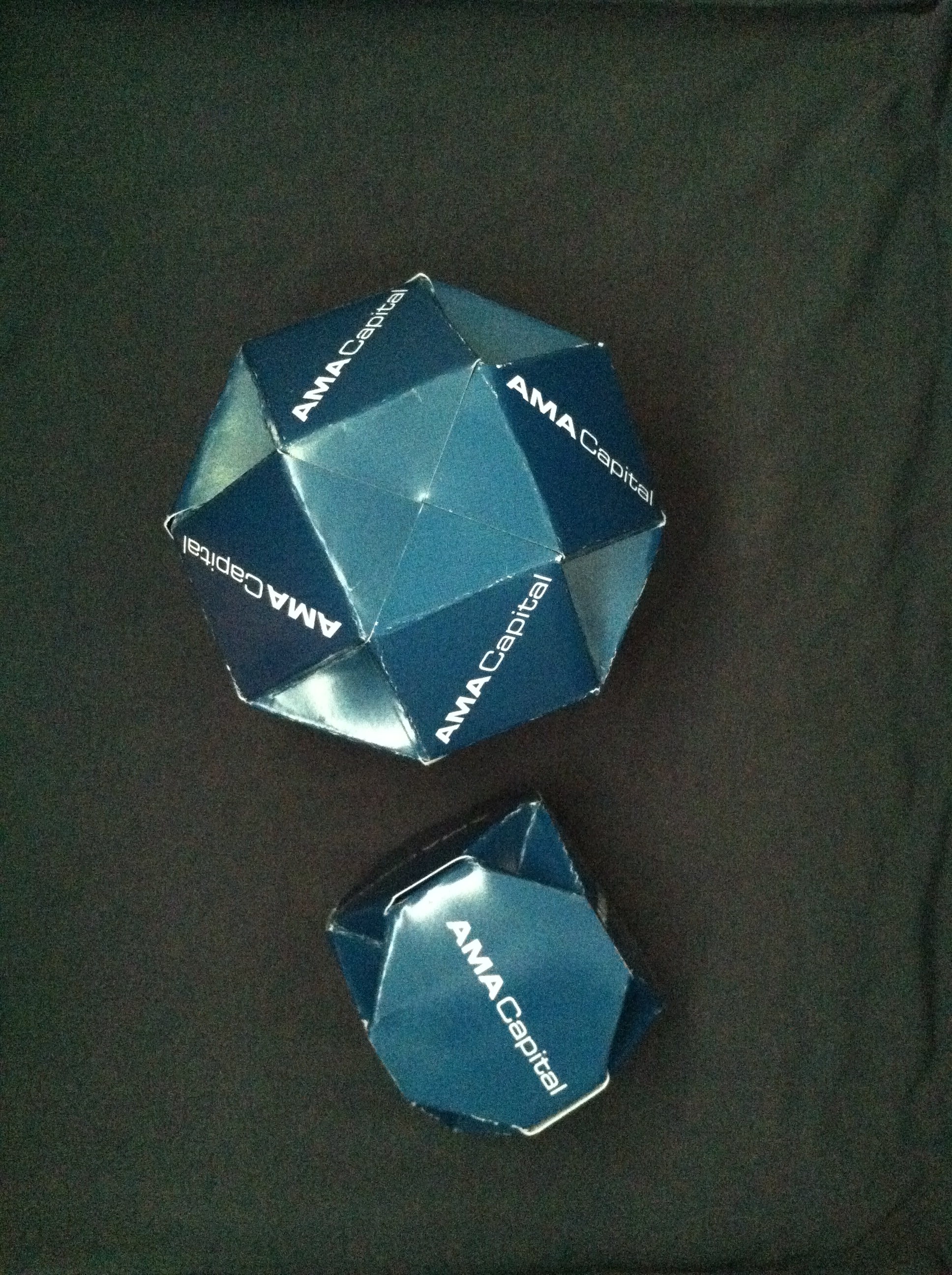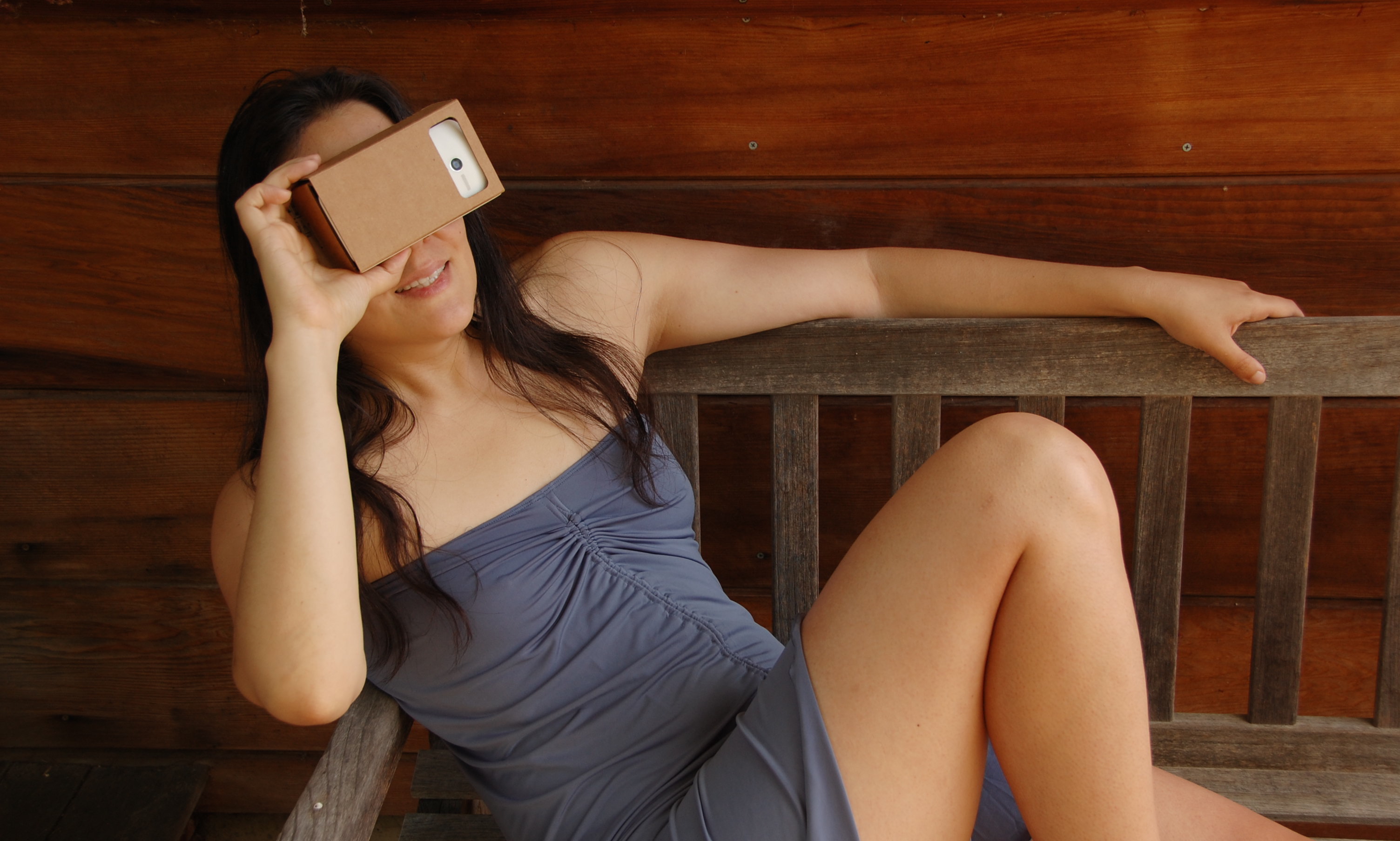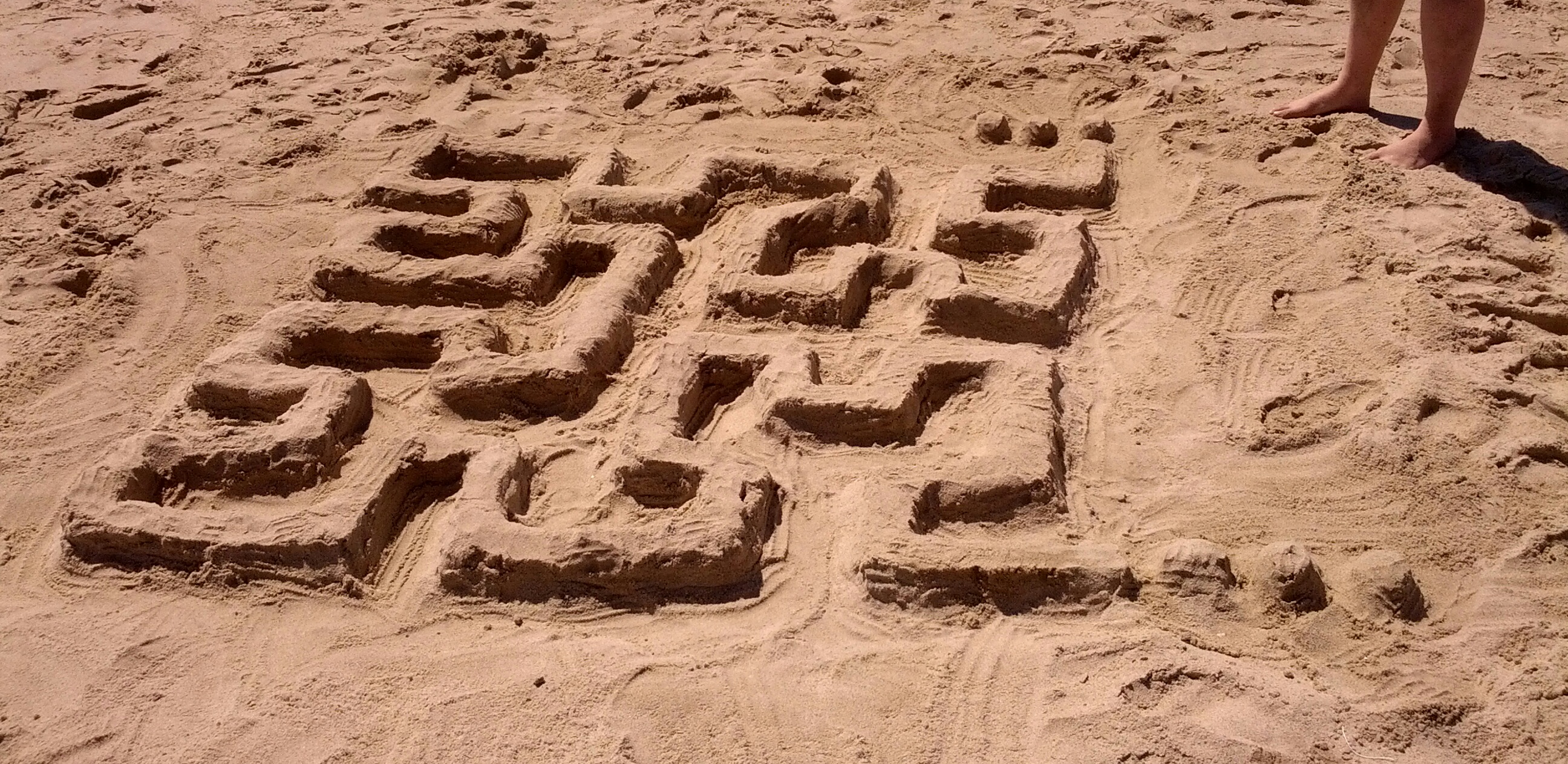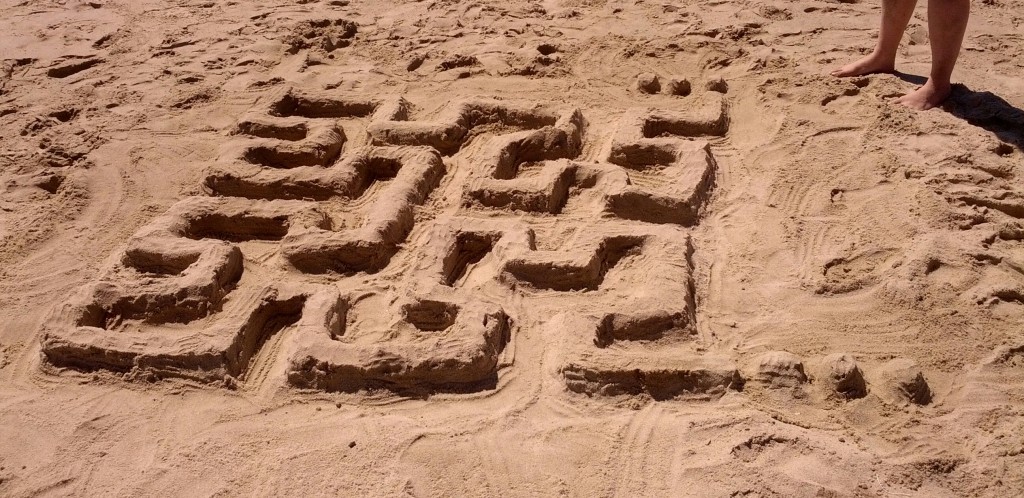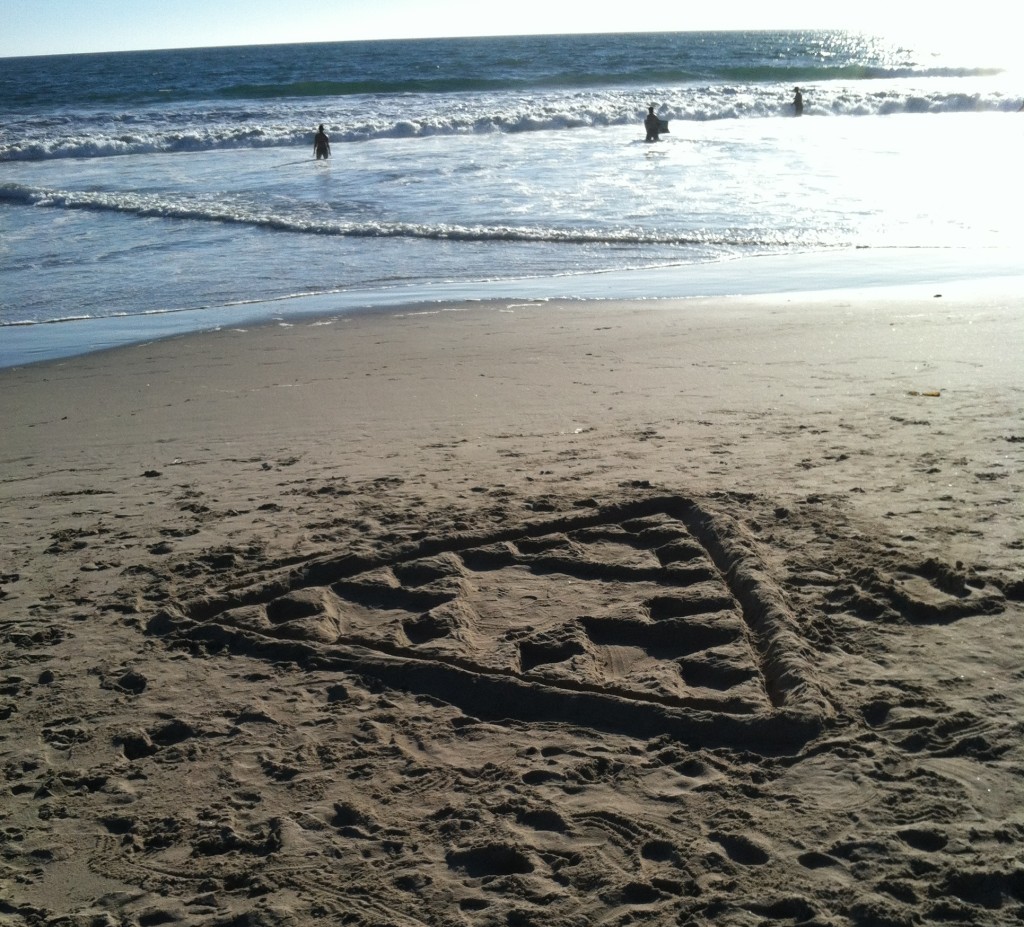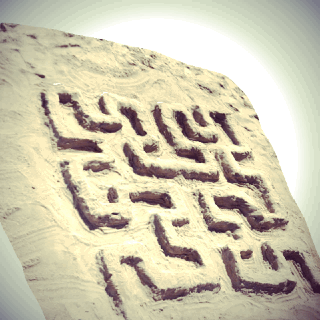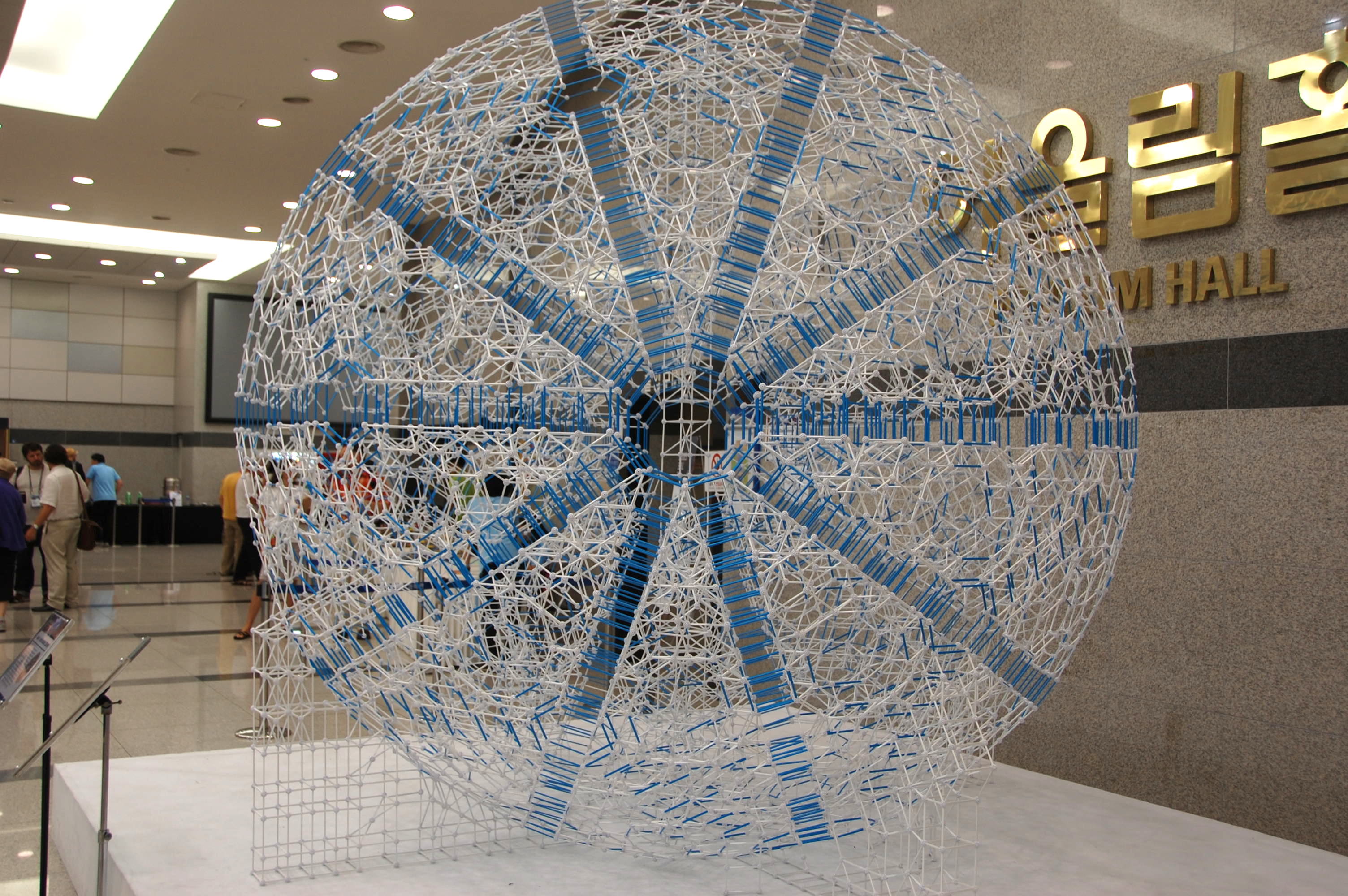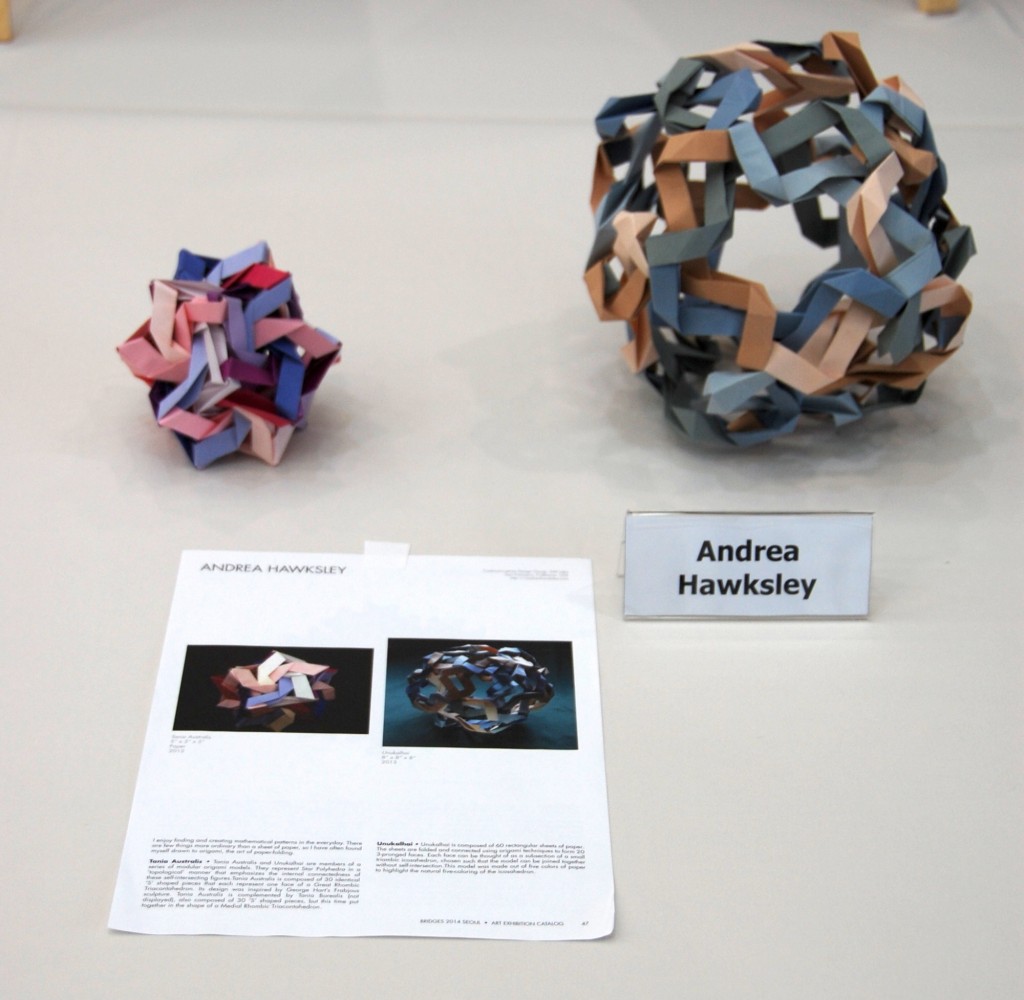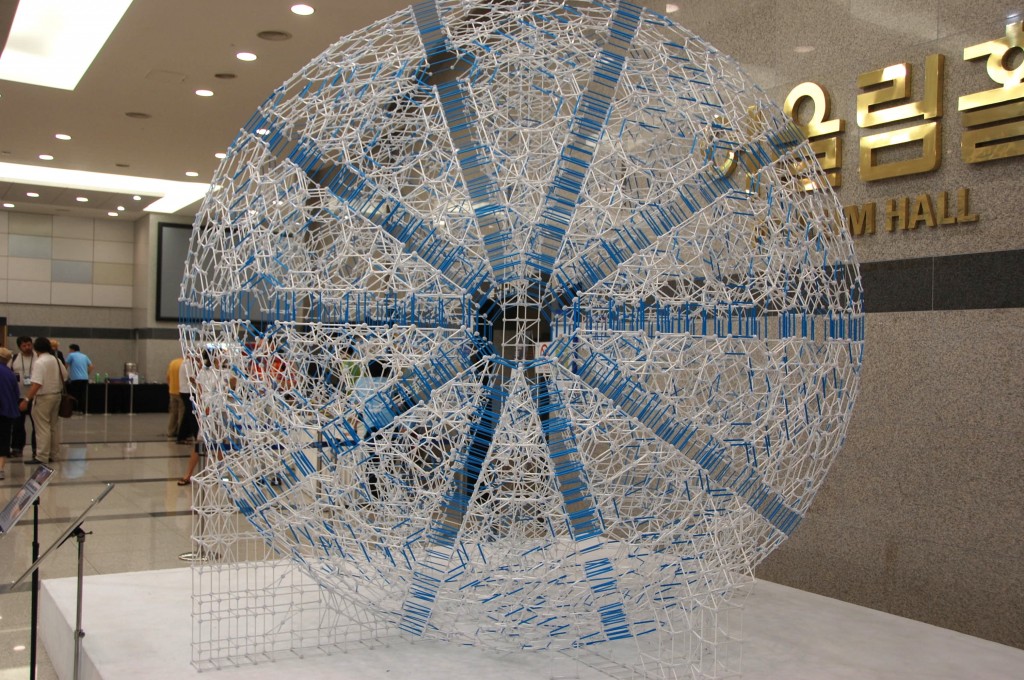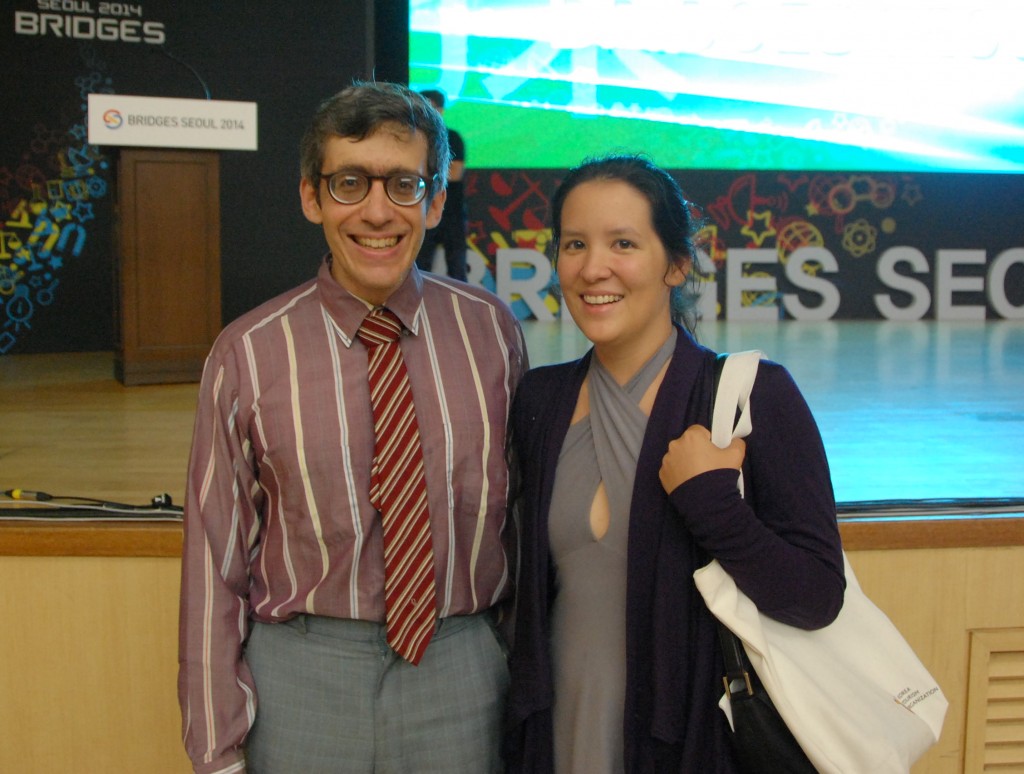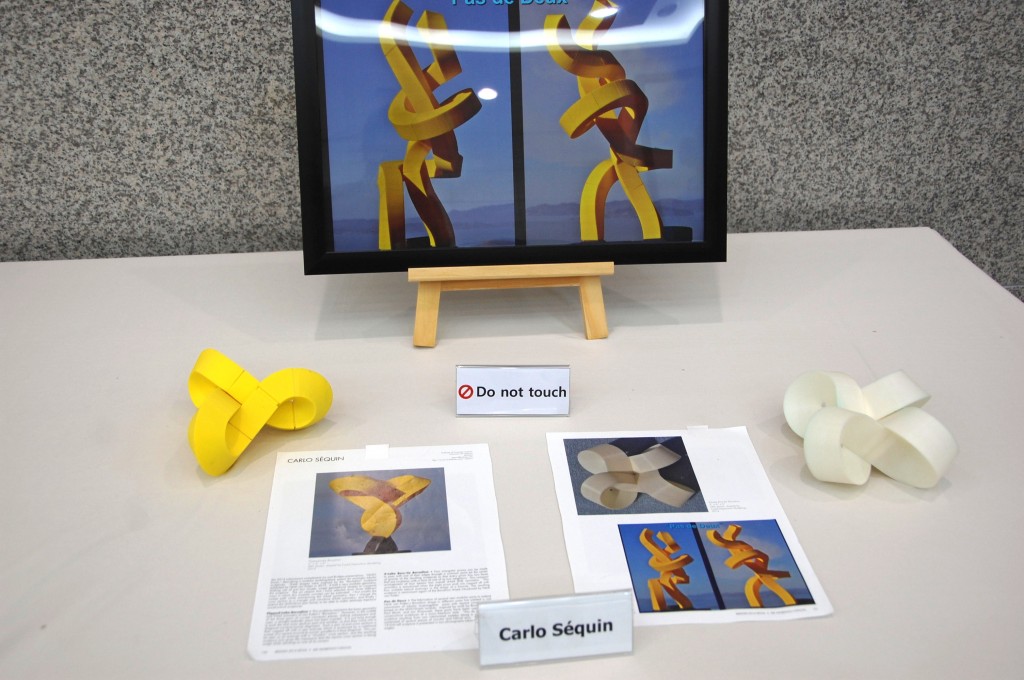The Celebration of Mind (CoM) is like a series of mini-Gathering for Gardner‘s that happens all over the world around the anniversary of Martin Gardner’s birth. If G4G has always looked like fun to you but you haven’t been able to go, I really encourage you to attend a Celebration of Mind.
Admittedly, I’m a bit late to the advertising, since some of the CoM events have already happened, but there are still plenty more to go (the 100th anniversary of Martin Gardner’s birth isn’t until tomorrow!).
Last weekend, I went to the Stanford CoM event and listened to some fun talks about an assortment of Martin Gardner related things. For example, Donald Knuth talked about Martin Gardner and the number 100 in honor of Martin’s 100th birthday. For the second half of the event, I ran a workshop where we did modular origami with business cards. There were a bunch of other neat workshop type things going on at the same time, but I’m afraid that I had to miss all of them.

This was my first time doing a business card origami workshop on the west coast and I was surprised how few people had done business card origami before. On the East coast, business card origami has evangelists like Jeannine Mosely, *the* master of business card origami. So I assume that most people interested in math art will have seen it before. But, apparently that is not so much the case on the west coast. It was fun being people’s first introduction to the idea. I had people commenting that they “finally knew what to do with their old business cards” or that they “needed to redesign their business cards to work better when folded up”.
I taught the smaller kids the standard six card cube (originally designed by ???, certainly rediscovered many times due to simplicity). Some of the adults entertained themselves by reverse engineering models that I had brought to show off. I also taught several people the module used to create a rhombicuboctahedron (a design that I discovered on my own, although, again, it would be far from shocking of someone else had made it first. Although, interestingly, I haven’t seen it anywhere else myself, so…).
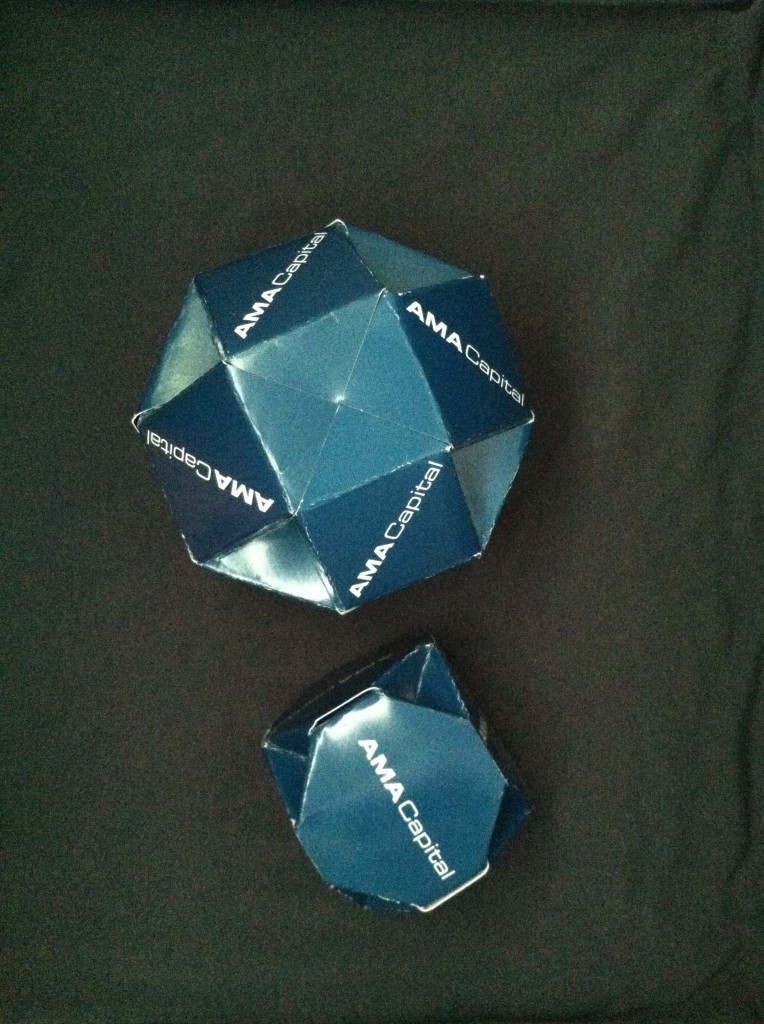
If you want to check out a similar event in your area, you can search for one on the official CoM page.
By the way, if you’re in the Bay Area and are sad about having already missing out on this event, then you’re in luck. There is another CoM in Berkeley on the 26th, so you get a free second chance to check it out for yourself!

